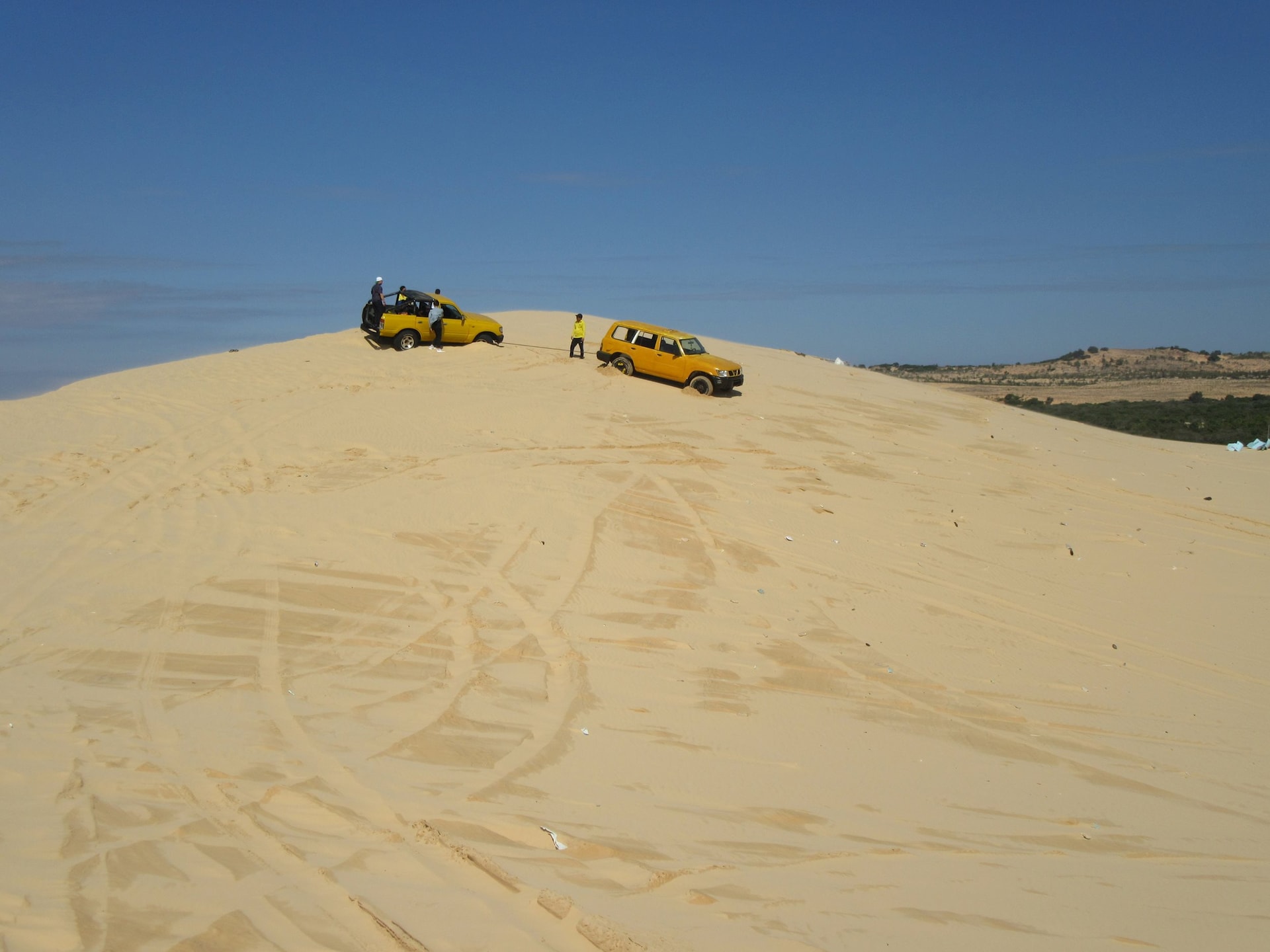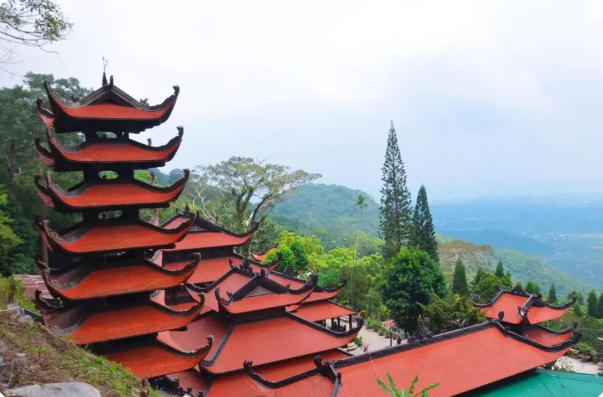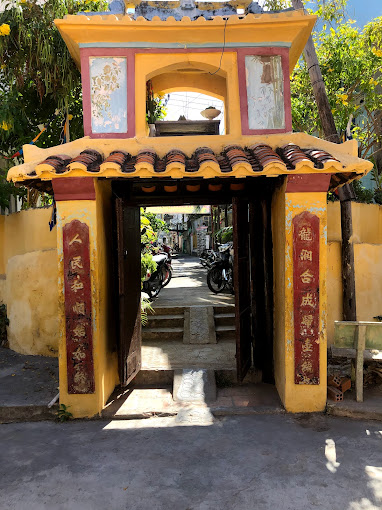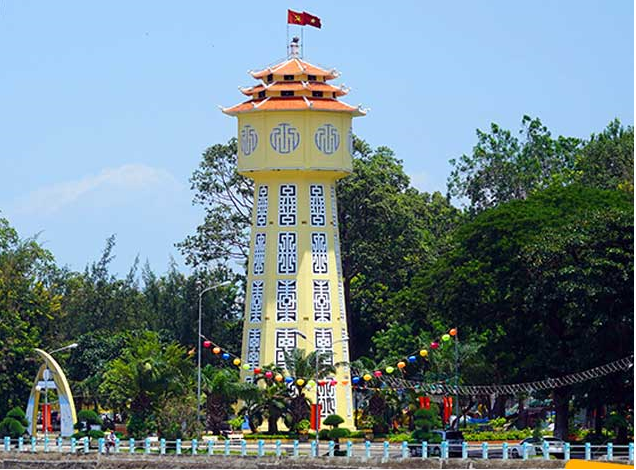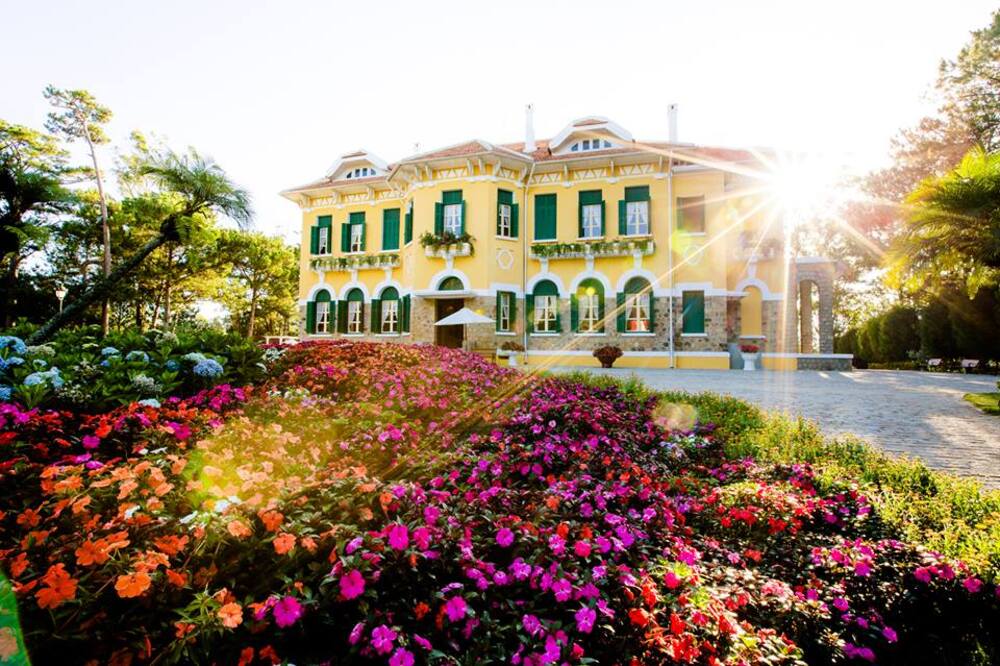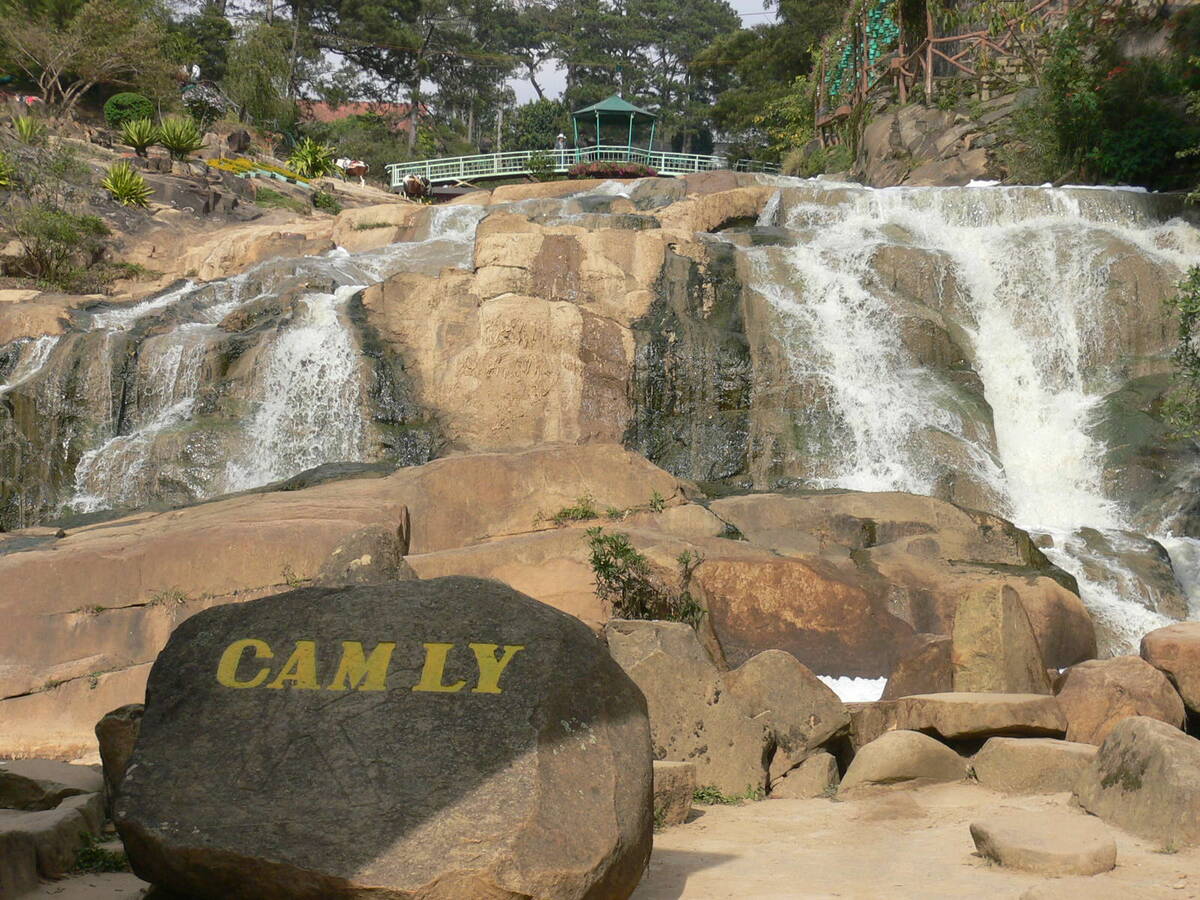Relic point Vietnam
Việt NamMui Ne white sand hill (Bau Trang)
Bau Trang (or Bau Cat, Bach Ho, Bau Sen) is a freshwater lake in Binh Thuan province, about 62 km northeast of Phan Thiet city, in Hong Lam village, Hoa Thang commune, Bac Binh district (formerly in Binh Nhon commune, old Hoa Da district). According to legend this place is a large lake, after the people cover the sand dam and run across the lake to pass. This large lake has since been divided into 2 parts: Tieu Ho and Dai Ho. Because "Bau" in the local language means "lake", for a long time, the local people have called Tieu Ho as Bau. In 1867 when Ho Chi Minh passed by here, seeing the beautiful scenery of Bau Trang that he called "Bach Ho". "Bach Ho" began to appear in Nguyen Thong's poetry and also from there became the poet who assigned Bau Trang. Bau Trang is divided into 2 parts by a sand hill across. The people here have been called Bau Ong and Bau Ba. Bau Ba is larger than Bau Ong and contains more water. The depth of Bau Ba is 19m in the rainy season. Around Bau Ba planted a lot of lotus. Lotus is planted by residents for the purpose of harvesting seeds and looking. Because of planting lotus in this area, the landscape is more special. Small than Bau Ba, but there is a dike separating the two lakes. Bau Ong is more shallow and not as sweet as Bau Ba. Possessing a rare natural beauty, Bau Trang is a famous sight that most tourists cannot ignore when choosing Binh Thuan is a resort, sightseeing, entertainment. With a total area of about 45 hectares, the tourist destination consists of 23.2 hectares of 3 types of forest types managed by Le Hong Phong Protection Forest Management Board, the remaining 2.8 hectares of land and 19 hectares of water surface managed by the People's Committee of Hoa Thang commune. In 2013, this place was recognized as a place in the top 100 impressive destinations of Vietnam, in the period of 2014 - 2016, continuing to receive the title of ASEAN favorite destination and the top 100 favorite points in the South. Especially in 2019, Bau Trang was honored to receive the ranking of national landscapes at the decision of the Ministry of Culture, Sports and Tourism. Source of information portal in Bac Binh district, Binh Thuan province.
Lam Dong 2249 view
Ta Cu mountain pagoda
Ta Cu mountain pagoda (locals or simply calling the mountain pagoda) is a temple located on Ta Cu mountain at an altitude of more than 400 m, in Thuan Nam town, Ham Thuan Nam district, Binh Thuan province, near Highway 1, 28 km south of Phan Thiet. This pagoda is a national historical and cultural relic of Vietnam. In the middle of the 19th century monk Tran Huu Duc (1812-1887) Dharma name Thong An, Huu Duc's Dharma from Phu Yen to Binh Thuan built a draft in Kim Thanh village (Bau Tram) who had just practiced and picked medicine. He used to practice and contribute a lot of effort to take care of Buddha in many pagodas in Binh Thuan such as Co Thach Pagoda, Linh Son (Tuy Phong), Phuoc Hung (Phan Thiet) and some pagodas in Phu Quy island. In 1872, the monk went to Ta Cu Mountain to practice in a rock cave (later called the nest cave). Until the time of death, Master Huu Duc did not go down the mountain anymore. At the same time, the monk Huu Duc was a good physician. In the 33rd year of Tu Duc (1880), the Empress Dowager was seriously ill, the gods asked to receive the monk to help treat the disease but the monk refused, only sent people to the court. The Empress Dowager was gone, King Tu Duc gave the name of the pagoda, Linh Son Truong Tho and the monk was "Venerable Venerable". Until the monk Huu Duc President passed away (on October 5, 1887 in the lunar calendar), the Master Tam Hien set up a new temple below, later called the lower pagoda or Long Doan pagoda and Linh Son Truong Tho pagoda as the temple. Above the temple, about 50 m from the nest cave is the statue of Shakyamuni Buddha, 49 m long, 7 m high. The work was chaired by Mr. Truong Y, casting with reinforced concrete in the restoration of 1963. About 50 m from the bottom is the Tam Ton Ton Ton statue group, built on the lotus: A Amitabha statue in the middle of 7 m high, the left is the statue of Avalokiteshvara and the right of Dai The Chi statue is 6.5 m high. The tomb tower of the ancestors and the abbot of the abbot was divided into two clusters in front of the church and after the temple. The nest tower is located in front of the temple, besides the tomb of the tiger, it is tamed by Master Huu Duc. Source of portal port of Binh Thuan province.
Lam Dong 2429 view
Tu Luong communal house
Tu Luong communal house was called by the name of Tu Luong village before. At the beginning, the communal house built with simple leaf paintings and gradually decades after that they were embellished in a solemn appearance. Like other communal houses in Binh Thuan, Tu Luong communal house is created by all the incense and people in the village. In 1995 - 1996, through surveys, comparison from architectural structure, construction techniques, art decoration art, the remaining ancient relics in the communal house and the genealogy of some people who settle down for a long time Life in the village, museum and Department of Culture and Information Binh Thuan determined to create Tu Luong communal house in the early nineteenth century. Currently, the communal house is located in Duc Long ward, about 1.5 km southwest of Phan Thiet city center. According to Mr. Nguyen Huu Tu - Head of Management Board of Tu Luong village communal house, at the beginning, Tu Luong is one of the villages with an ideal position, convenient for business and early economy. Dinh in Phan Thiet. In Tu Luong communal house, there is still a picture of the ancient horizontal screening of Han characters clearly about the geography and landscape of the village. The architectural complex of Tu Luong communal house at the beginning of creating quite a large scale, the superficiality includes the temple of the god, the road, the three gate, the gate, the room, the worshiping space And the wall surrounded. Tu Luong communal house has a unique architectural structure, here using two typical local folk architecture forms, which are the "four -pillar" and "coincidence" architecture combined . In architectural structure, wood, bricks play an important role. In which wood is the main material to create the link frame of each roof of the communal house, followed by the blending mortar with folk experience from lime, shells, sand, molasses, asphalt ... to make The adhesives build solid walls and solemn and ancient communal houses. The roofing materials and floors are still reserved, which are ancient yin and yang tiles and Bat Trang bricks that were commonly used in folk structures at that time in the locality. In addition, in the communal house, there were 2 bronze casters dating back to the late nineteenth century. Both Dai Hong Chung plays an important role in Dinh's annual music reconciliation. 6 Dragon examination, 4 incense, 3 covers and 2 mail projects. These are precious wooden -made, carved, elaborate and sharp relics. These relics have an important function in the decoration of worship in the interior. 20 diaphragm and 16 couplets, the whole carved ancient Han characters on good wood. Each picture has different sizes, some have the border around the image of Giao Long, elegant flowers. The content of praising the authority of the god, passing on to the descendants of the great gratitude of grandparents and ancestors; The generation only follows the fine customs and fine traditions of the nation ... Tu Luong communal house was ranked by the Ministry of Culture and Information of the National Architectural Architecture Monuments in 2001. This is the place where folk festivals take place in cultural space. Every year, the communal house organizes many sacrifices. The biggest are two Le Xuan Thu Ky in February and August of the lunar calendar. Through this, today's generation understands more about the local history, from which to be aware of preserving the good cultural value of the ancient ancestors. Source of electronic portal of Duc Long ward, Phan Thiet city, Binh Thuan province.
Lam Dong 2296 view
Temple and tomb area of Nguyen Thong
He was born on May 28, 1827 in Binh Thanh Village, Thach Hoi Ha General, Tan Thanh District, Tan An District, Gia Dinh Province (now Phu Ngai Tri Commune, Chau Thanh District, Long An Province), whose name is self. Hy Part, Ky Xuyen, Nickname Am. . Smart, eager to learn but Nguyen Thong soon orphaned. With his rise efforts, he was a monk. When France invaded Cochinchina, he and his scholars here refused to cooperate and go to the land in Binh Thuan. His whole life, he wholeheartedly worried about the country, for the people ... When he was 10 years old, his mother died. 7 years later, his father also died. His family has since fallen in misery, so Thong has to make a living to take care of the whole family. Eager to learn but there is no teacher with the couple, so the two brothers have to study themselves. Until Mr. Nguyen Nhu Hien was appointed by the court to work in Tan An, the two brothers came to ask for life. The time of studying Mr. Hien was not long, the teacher was sent to the capital. In 1849 (in the Year of the Rooster, the reign of King Tu Duc), Nguyen Thong passed the bachelor's exam, but by the festival, he was dropped just because of the reason that the test was covered with ink. Also because of the poor family, Thong could not continue his career in book lights and he received the training in Phu Phong - An Giang Province. In 1855, he went to Hue, and then a year was promoted to the Academy of Division, in the cabinet, participating in the preparation of the book "Human Resources Kim" (the golden mirror illuminated the human work). When France invaded the Southeast of the Ky in 1859, Nguyen Thong volunteered the army and worked as a powerful advice for the Governor of the Military Service of Ton That Hiep, looking after the secret work. Chi Hoa station was lost in 1861, then Bien Hoa province was also occupied by France. After fighting in the peaceful battle, his brother Trinh Quang Nghi and his friend Phan Van Dat recruited the Mo Nghia to fight against the French army in Go Cong and Tan An. Nguyen Thong participated in that movement. Phan Van Dat was killed by the French, and Thong was lucky to escape. The following year, Mr. Truong again helped Truong Dinh very effective in the position of military service. In 1862, France forced us to cede 3 Eastern provinces, thanks to Phan Thanh Gian nominated, Nguyen Thong was appointed as the Doctor of Vinh Long. Here he still kept in touch with him, and still contacted the patriotic scholars, including the scholars who moved their families from the East to. At the same time, he rebuilt Van Thanh Temple of Vinh Long. In 1867, France used to occupy Vinh Long citadel, he and many Nam Ky scholars refused to cooperate, so they went out in Binh Thuan. Nguyen Thong and his comrades discussed the investigation and contact with Bien Hoa, and also actively developed agriculture and food production for long -term concerns. He himself organized the exploration of La Ngu and Ba Dau plateau (Binh Tuy), stating the terrain and terrain of the ability to reclaim and draw clearly the map. After that, he was mobilized to Khanh Hoa, then went to Quang Ngai, Hue. At the end of 1867, he was a project close to Khanh Hoa province and offered to award the name of Thuy to Phan Thanh Gian and hearing 4 issues of benefit of the country but was rejected by the Hue court. In 1870, Nguyen Thong made an argument for the image of Quang Ngai. Especially in Quang Ngai for 3 years, he has done many things to benefit farmers, especially irrigation. At the same time, he was involved in an unjustly accused of being sentenced to the court, so he was dismissed by the court, imprisoned into prison and trial. The people and soldiers all loved him so he asked Quan Kham Sai Nguyen Binh to take office in Quang Ngai to review his crime. Some people voluntarily come to the city to meet the king to complain to him. The king of love should forgive him and for the new investigation or this incident was because Cuong Hao Le Doan accused him of him. During this time, he was accepted by the court two aspirations, namely: Organizing planting trees and defining the history of history, please issue a book to study schools. In 1876, he returned to Hue to work as a career in Quoc Tu Giam. He and Mr. Bui Uoc and Hoang Dung Tan approved the "Kham Dinh Viet history". And also on the occasion of the Hue capital this time, he composed the "Vietnamese history of judges". At the same time, he offered and prepared to exploit the Central Highlands from the Cambodian border to Quang Tri, to collect the people of the South. But in the end this was opposed by the French, so the Nguyen court ordered to abolish it. In 1880, Nguyen Thong was the deputy vice -artist and the Doctor of Binh Thuan Province, he also discussed with the compatriots of the countryside. Binh Thuan after running from the South. He built a small house next to the Phan Thiet River (now the area of Duc Thanh relics), named Ngoi Du Sao (the team is playing) to read books, write poems, on the wall, there are some typical scenes that Mr. Trai's life. He officially considered Binh Thuan as his second home. In 1884, Nguyen Thong died. His tomb was built at the foot of Co Mountain (Ngoc Son Mountain) in Ngoc Son village - Phu Hai ward - Phan Thiet city - Binh Thuan. The tomb of Doanh Dien Porcelain Binh Thuan Nguyen Thong was built quite simply and close. The tomb has a length of nearly 9 and a half meters, nearly 6 and a half wide. The main part of the tomb covers the unicorn like the ancient tombs of the ancient people. Around the tomb is very beautiful ornamental plants, looking at the tomb of Doanh Dien Binh Thuan now looks very monumental. This tomb area was ranked by the State in 1999. , historian ... Nguyen Thong for our nation. Source of electronic portal of Phu Hai ward, Phan Thiet city, Binh Thuan province.
Lam Dong 2400 view
So Tra historical site
Right on the campus of Regiment 726, Quang Truc commune, Tuy Duc district (Dak Nong), there is an old, white house, built in French architectural style. According to experts, this place was formerly the site of So Tea built by the French in Dak Nong. Around the 30s of the twentieth century, French colonialists entered the Central Highlands to open plantations, grow crops such as coffee and tea and hire ethnic minority workers. In 1962, the Plantation at that time was about 20 hectares large and there were about 80 workers working here. Among them, there are about 40 ethnic minorities working at the plantation. In particular, there were 12 political prisoners arrested to work here. Workers working at the plantation are paid 30 VND/month. There are people who don't take money and will exchange it for rice or salt. At the end of the year, you will be rewarded with beef. One day, workers at the tea plantation work from 7 a.m. to 5 p.m., and are given food and rest at noon. Around 1966, the plantation was dissolved. Through surveys, the historical site of So Tra was preserved quite intact with a structure built with reinforced concrete structures, following the French architectural style of the early 20th century. Currently, there are no specific documents about the process of building the house on which date, month or year. The area of the house is about 200m². The house is almost intact with 1 ground floor, 1 floor and 1 mezzanine. Inside the house there are 8 rooms and a fireplace built from the ground floor to the first floor and mezzanine for warmth when it's cold. Behind the room on the ground floor there is a secret escape hatch, but the mouth of the tunnel is covered. Up to now, although managed by Regiment 726, this secret tunnel has not been discovered. Near the construction area there are a number of fruit trees and ancient tea trees that, according to local people, are about 100 years old. Among them, 2 tamarind trees have been recognized as Vietnamese heritage trees in September 2022. So Tra historical site is recognized as a provincial historical site. Source: Dak Nong Electronic Newspaper
Lam Dong 3693 view
Phan Thiet Water Tower
Phan Thiet water tower located on the Ca Ty river was built nearly 90 years ago, designed by Prince Xuphanuvong (Laos), and is currently a symbol of Binh Thuan province. Phan Thiet Water Tower (also known as "Water Tower") was built by the French from 1928-1934 according to the urban planning policy of the contemporary government, serving to provide domestic water for the French Legation (now the headquarters of Binh Thuan People's Committee) and people in Phan Thiet city. The location for the water tower is located on the land of Long Khe village, on the left bank of the Ca Ty river, high and airy, about 350 meters from the Legation Palace. The design of the water tower was drawn by Prince Xuphanuvong (Laos, who was then an international student at Albert Sarraut School in Vietnam), approved by the Hanoi Department of Public Works and the project was put out for bidding. Among two French contractors and two Vietnamese contractors, contractor Ung Du (originally from Hue, working in Binh Thuan) won the bid. The water tower is built in a regular octagonal cylinder. The height from the base to the top of the tower is 32 m. The whole is divided into 3 parts, including: the tower body, the platform and the roof. The tower's body has an octagonal cylindrical shape, each side is 3.9 m wide, the higher it goes, the smaller it becomes. The diameter of the tower's base is 9 m long, the circumference is 31.2 m, and the floor area is 73.4 m2. Along the edges of the tower's body, from top to bottom, there are 5 ventilation boxes decorated with seal patterns corresponding to the 5 words: "Happiness", "Phuc", "Tho", "Kiet", "Loc" . The meaning is to wish all people joy, happiness, longevity, prosperity and prosperity. Particularly, the west side of the ventilation box with the word "Loc" is replaced by an iron door entering and exiting the tower. The platform, that is, the water tank, is also designed in an octagonal shape, 5 m high, 9 m in diameter, containing 350 m3 of water. Around the platform, there are 8 circles embossed with pieces of porcelain stylized with the four letters U.E.P.T, which stands for the French phrase "Usine des Eaux de Phan Thiet" (meaning Phan Thiet Water Plant). With its high architectural features, the building is also used as a flagpole. Master Nguyen Chi Phu, Deputy Director of Binh Thuan Provincial Museum, said that during the construction process, experts and workers strictly followed the technical design. Gravel must be washed 5 times to remove sand and dust. Foundry sand must also be washed 3 times to remove dirt. Cast iron must be rubbed with sandpaper to remove rust. Boards used for formwork must be planed smooth so that when removed, there is no need to add any additional plaster. Thanks to that, the project is sturdy and durable until today. After nearly 90 years of existence, even in the face of war bombs and harsh environments, especially through two historic floods in the years of Nham Thin (1952) and Quy Dau (1993), the water tower still stands majestically in the heart of the city. The city, becoming a sacred symbol, entered the poetry and music of the coastal land of Phan Thiet. On October 19, 2018, Phan Thiet water tower was decided to rank as a provincial monument by the Binh Thuan People's Committee. Source: Phan Thiet Tourism
Lam Dong 4318 view
Bao Dai Palace 1
Da Lat is famous for 3 palaces during King Bao Dai's reign: Palace 1, Palace 2, Palace 3, associated with the ups and downs of our country's history. In 1940, a French millionaire named Robert Clément Bourgery built Palace 1. In 1949, King Bao Dai's father-in-law contributed money for the king to buy this mansion. King Bao Dai set up his General Headquarters here to work during his years as Head of State from 1949 to 1954. Besides Da Lat, King Bao Dai also owns another very famous mansion in Vung Tau, which is Bach Dinh. In 1956, Palace 1 was transferred to Ngo Dinh Diem for use. Many years later, this place became a resting place for heads of state until 1975. In 2014, the local government invested in restoring and repairing Palace 1, making this place available for sightseeing. vacation in Da Lat. Palace 1 of Da Lat (Bao Dai Palace) has undergone many renovations. The outside campus is spaciously designed and equipped with luxurious tables and chairs. Stepping through the gate into the campus, there are hundreds of blooming flowers, a giant flag garden, 7-color steps, hundreds of hanging lanterns... The fountain has a bold European feel as well. attracts many tourists. Stepping up to the first floor, in addition to the main lobby area, on both sides of the palace are 2 large living rooms, behind are 4 rooms of different sizes. In the past, these rooms were used as transition rooms, clerical rooms, kitchens and WCs. At the end of the first floor is a very majestic and magnificent photography room. Including a throne, a hammock painted in red and gold... When you step up to the 2nd floor of Bao Dai Palace 1, you will see 3 different bedrooms. The first room is the bedroom of King Bao Dai's mother (Mrs. Tu Cung). The second room is King Bao Dai's bedroom. Next is Queen Nam Phuong's bedroom, located opposite the palace hallway. It can be said that the second room is the most important in King Bao Dai's first palace. This is where important meetings took place during the reign of King Bao Dai from 1949 to 1954. This is also the place to discuss campaigns and wars from 1955 to 1963. During Ngo Dinh Diem's government, he renovated King Bao Dai's room and dug a secret tunnel here. The path down to the tunnel is disguised to look like a bookshelf to the right of the bed. This exit leads to the helipad behind the hill of palace 1. Especially in this mansion are military-style constructions, you will not help but be surprised and overwhelmed by its unique appearance. First is a large helicopter landing pad, gas depot, and emergency exit (tunnel). The tunnel door is equipped with metal weighing several hundred kilograms, artillery, bulletproof glass... Source: Da Lat tourism information portal
Lam Dong 4669 view
Relics of Resistance Base Area 6 Cat Tien
The historical relic site of resistance base in Cat Tien zone VI has a total area of nearly 50 hectares, located in village 5, Duc Pho commune, Cat Tien district, Lam Dong province. This is an ideal address to attract people and tourists who love nature, explore and learn about history and national revolutionary traditions. Area VI relic, Cat Tien is a work of important historical significance, recording the merits and achievements of generations of ancestors in the struggle against the American invaders, period 1963 - 1966. Mold The relic site of Area VI, Cat Tien is designed harmoniously, scientifically and beautifully, suitable for the landscape space, with a system of clean, beautiful concrete-paved internal roads winding around cool, green ponds and lakes; The majestic monument located on the top of the central hill has created a highlight that attracts the attention of people and tourists when visiting the relics of Area VI, Cat Tien. Not far from Monument Hill is a display house with 108 collected artifacts and a number of primitive weapons restored for display and explanation. Scattered on the green hillsides shaded by forest trees are buildings of camps and shelters recreating the working and living spaces of "Region and Military Region Party Committee agencies" with a total of 23 categories. categories, in which, the Regional Party Committee agency has 12 categories and the Military Region agency has 11 categories. According to historical documents, in the period from 1963 - 1966, Cat Tien Party Committee and Zone VI made important contributions marking the continuous growth of our country's revolutionary forces. In the beginning, Area VI was the place to focus on consolidating and preparing the necessary conditions to coordinate with the entire South to attack the enemy, destroy strategic hamlets, expand the controlled and liberated areas, and create position and force. for the Vietnamese revolutionary movement to win great victories. Especially in the Winter - Spring of 1964 - 1965, the revolutionary movement in Area VI had a leap forward in both width and depth; The army and people of Zone VI proactively coordinated with the entire South to attack the enemy in the Dong Xoai campaign in the summer of 1965, contributing to the bankruptcy of the US imperialism's "special war" strategy. In the dry season of 1965 - 1966, the army and people of Zone VI defeated the enemy's first counterattack in the Zone VI battlefield. From here, the army and people of Zone VI continuously failed the enemy's pacification and search-and-destroy plan in the second strategic dry season counterattack (1966 - 1967). By the dry season of 1967 - 1968, the army and people of the Zone VI stepped up its attacks and won great victories. From mid-1965 to the end of 1968, the Party Committee, army and people of Region VI coordinated with the entire region to defeat the "Local War" strategy of the US imperialists. The victories of the army and people of Zone VI - Cat Tien demonstrate the Party's ingenious and wise leadership. Among them, the ethnic community of Zone VI was united, heroic, and indomitable, achieving resounding victories, demonstrating the brilliance of revolutionary heroism, and with passionate patriotism helping the army. and the people of Area VI overcame countless difficulties and challenges, winning victory after victory in the resistance war against the US to save the country, contributing to completely liberating the South and reunifying the country. The construction and embellishment of the historical relics of the resistance base of Zone VI, Cat Tien has shown the spirit of drinking water, remembering the source, honoring and promoting the great historical values of the army and people of Zone VI, and the community. This is the place to educate, train and foster revolutionary traditions for future generations. Source: Cat Tien District Electronic Information Page
Lam Dong 6912 view
Datanla waterfall relic area
National historical and cultural relic tourist area Da tang la waterfall, also known as Da tan la, is a famous waterfall in Da Lat city, Lam Dong province, Vietnam. Located in the Da Tan La tourist area, the waterfall is 8 km from Prenn waterfall and about 10 km from Da Lat city center. Da Tang La Waterfall is considered one of the ideal destinations for tourists who want to visit and experience adventure. The name "Da tang la" or "Da tang la" is taken from the K'Ho language, made up of the word "Da-Tam-N'ha", meaning "there is water under the leaves". This name originates from the historical conflict between the Cham - Lach - Chil peoples in the 15th century. to the 17th century. Da Tang La Waterfall has abundant water thanks to a stable water source from upstream. Not as noisy as some other waterfalls, Da Tang La flows through many stone shelves and falls from rapids about 20m high. The lower part of the waterfall forms a very clear water area, called Suoi Tien, while the upper part has a deep pool called the Death Abyss. According to legend, because this abyss is located in the middle of a mountainous area, it was once a refuge for an army of the indigenous people during the war with the Cham people hundreds of years ago. There are many legends about the origin and meaning of Da Tang La waterfall. One of them tells about the meeting of the brave warrior K'Lang and the mountain girl Hobilang here. Some other legends about Da Tang La waterfall say that the waterfall is the place where fairies often bathe, or the story about the war between the Lat and Cham people, in which the waterfall played an important role in the fighting strategy of the people. Surname. With those cultural values, in 1998, Da Tang La Waterfall was recognized by our state as one of the famous landscapes and historical relics in Da Lat, ranked as a national monument. . Source: Da Lat tourism information portal
Lam Dong 3781 view
Historical relic of Cam Ly Waterfall in Dalat
Cam Ly Waterfall is located 2km west of Da Lat city. This is considered the waterfall located closest to the city center. Cam Ly waterfall is located next to Cam Le stream, the waterfall is formed from part of the water flowing in from Xuan Huong lake and another stream, Cam Ly stream, also flows here. Cam Ly Waterfall is one of the waterfalls that talks about the remembrance, gratitude, and respect of the people here for people with meritorious services during that period. Legend has it that Cam Ly waterfall originated from the K'Ho language. People in the Lach (Lat) tribe call Cam Ly waterfall Lieng To Sra - the boundary of Cam Le stream to Da Dong river. People in the new village took the name of the chief of the Lach (Lat) tribe at that time, K'Mly, to commemorate and show the villagers' gratitude to this chief. This chief took care of the meals and sleep of the entire tribe, lived in harmony with the people, and took care that the lives of the people in the village became prosperous, prosperous, and complete. So the name of this chief given to the waterfall was K'MLy, later pronounced Cam Ly. According to the Sino-Vietnamese origin, Cam Ly means stream with fresh water (Cam means sweet, Ly means permeable). Cam Ly Waterfall possesses poetic beauty, especially in the rainy season when the water flows rapidly, creating huge blocks of water pouring down violently. With a convenient location near the city center, Cam Ly waterfall attracts a large number of tourists every year. At the foot of Cam Ly waterfall is a small flower garden, contributing to creating a harmonious and beautiful landscape. In addition, in the waterfall area there is also Nguyen Huu Hao mausoleum, built with many unique architecture. In 1998, Cam Ly Waterfall was ranked by our state as a scenic spot and historical relic in Da Lat, recognized as a national monument. Source: Da Lat tourism information portal
Lam Dong 3795 view
